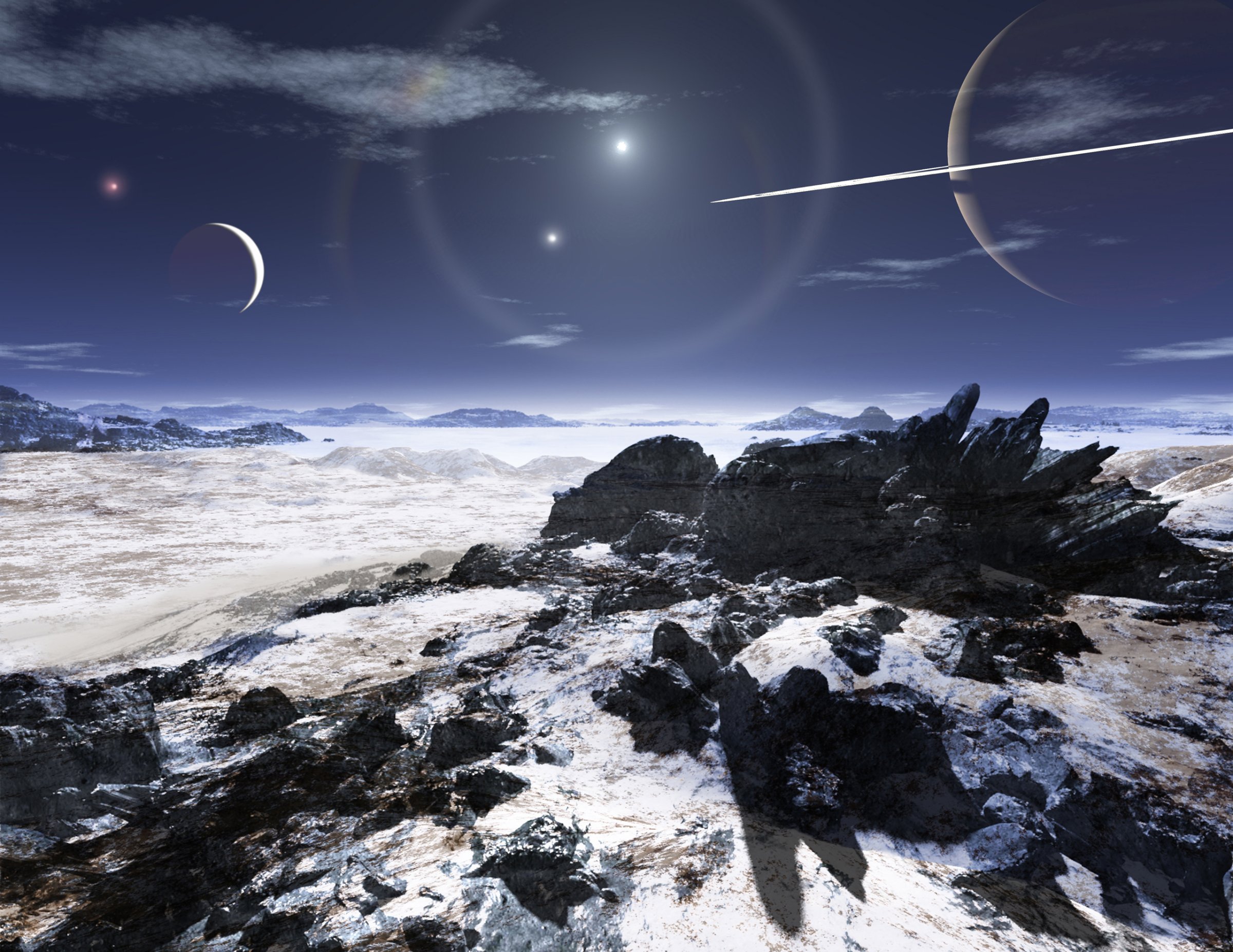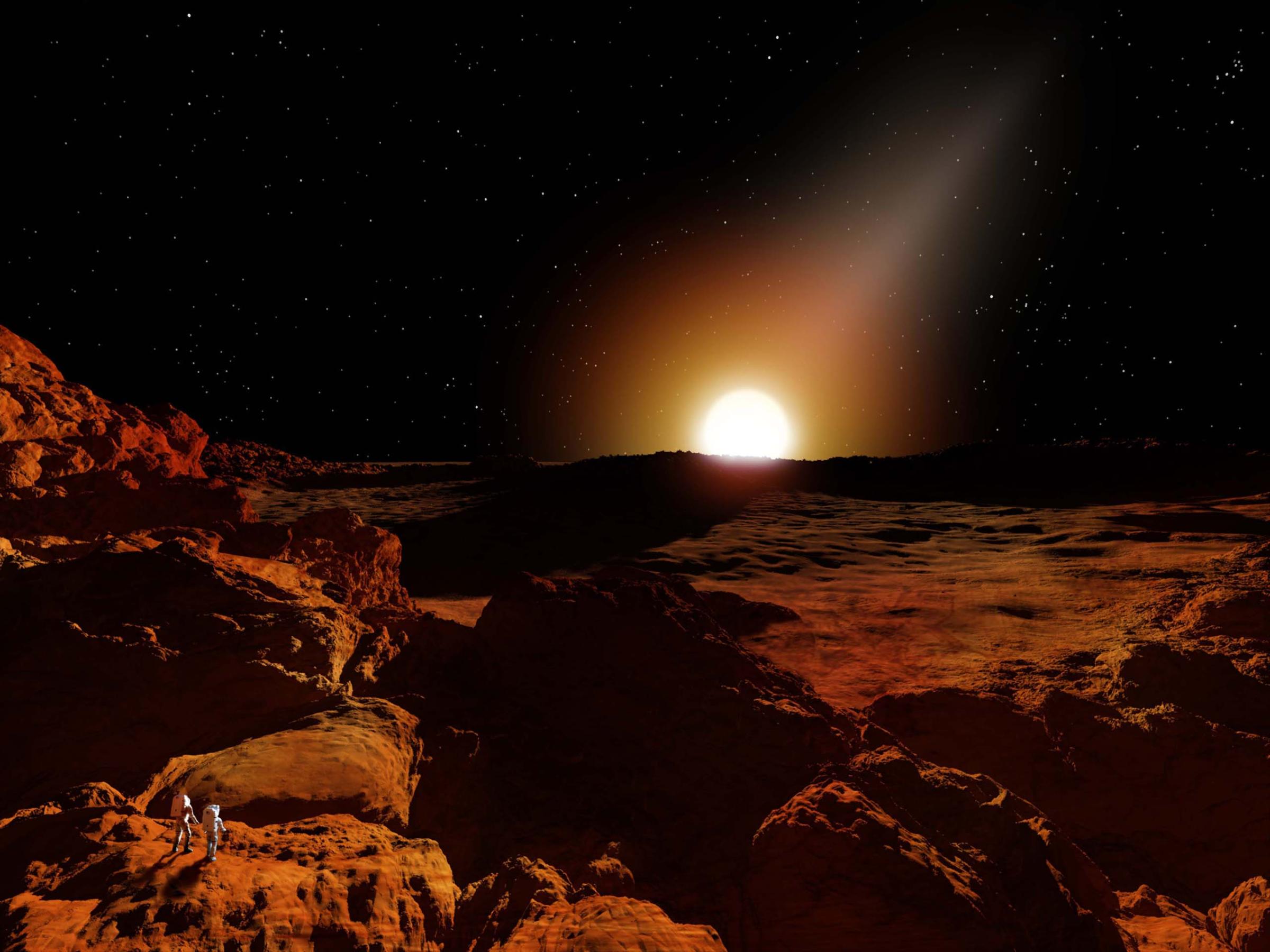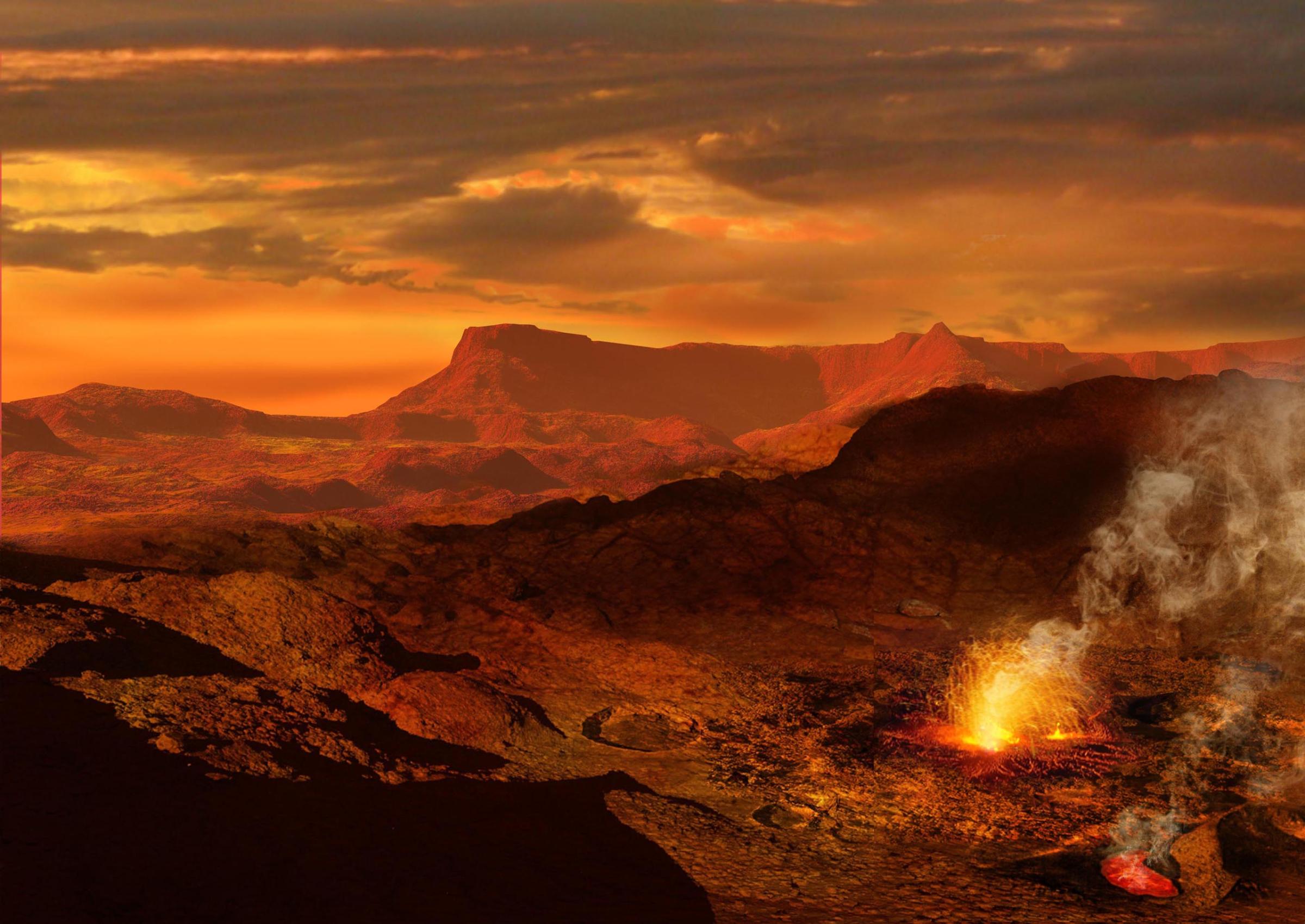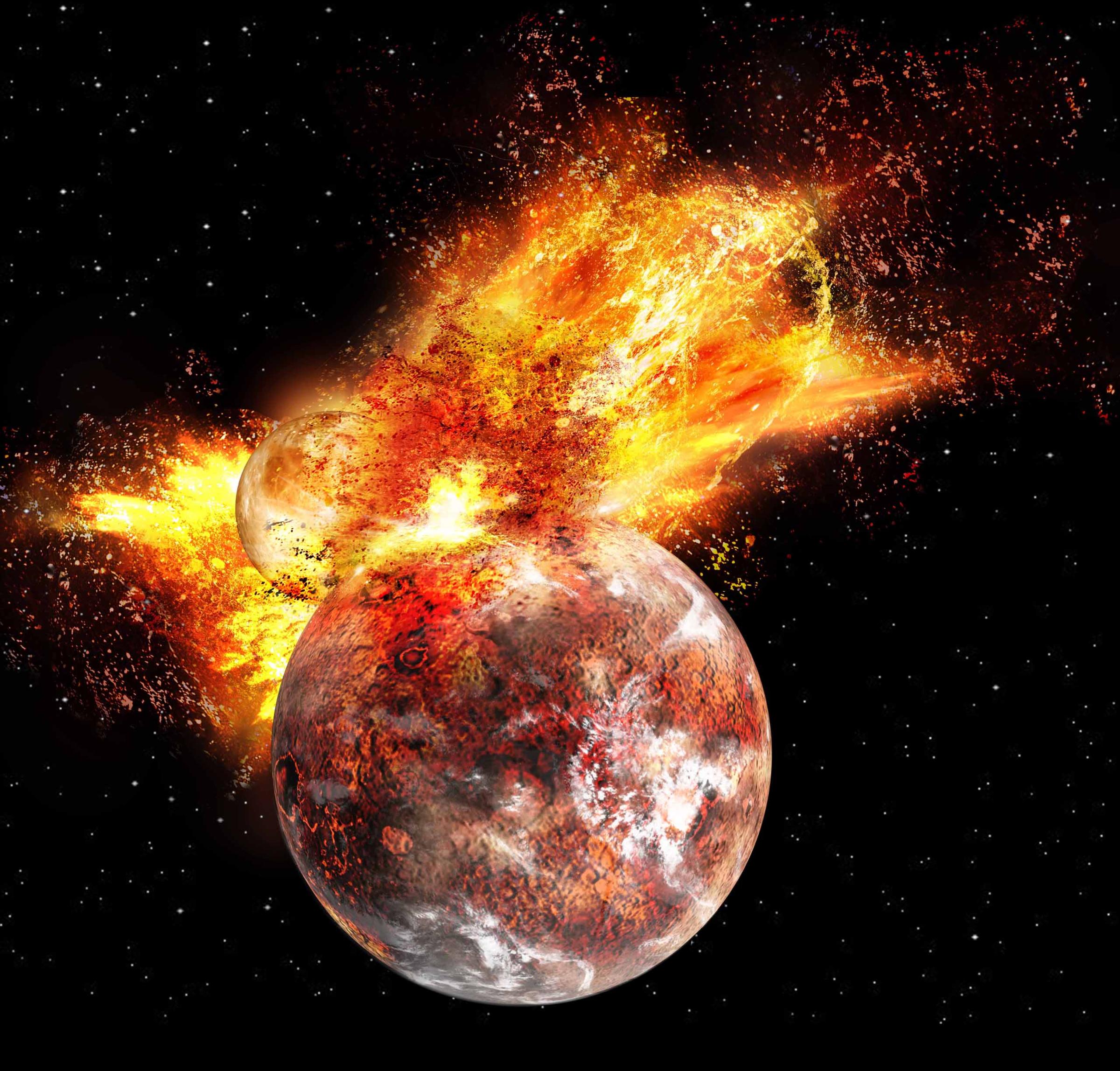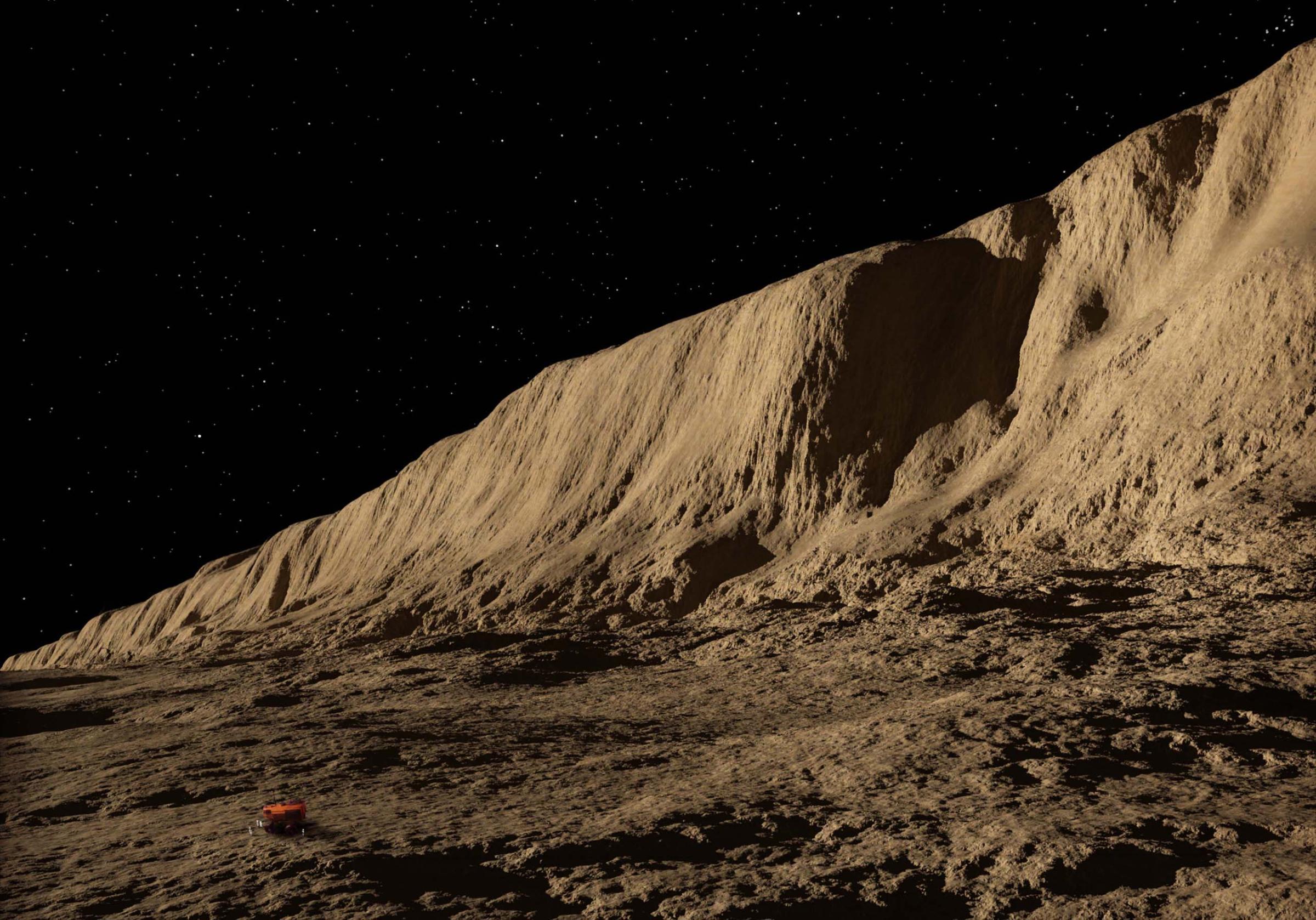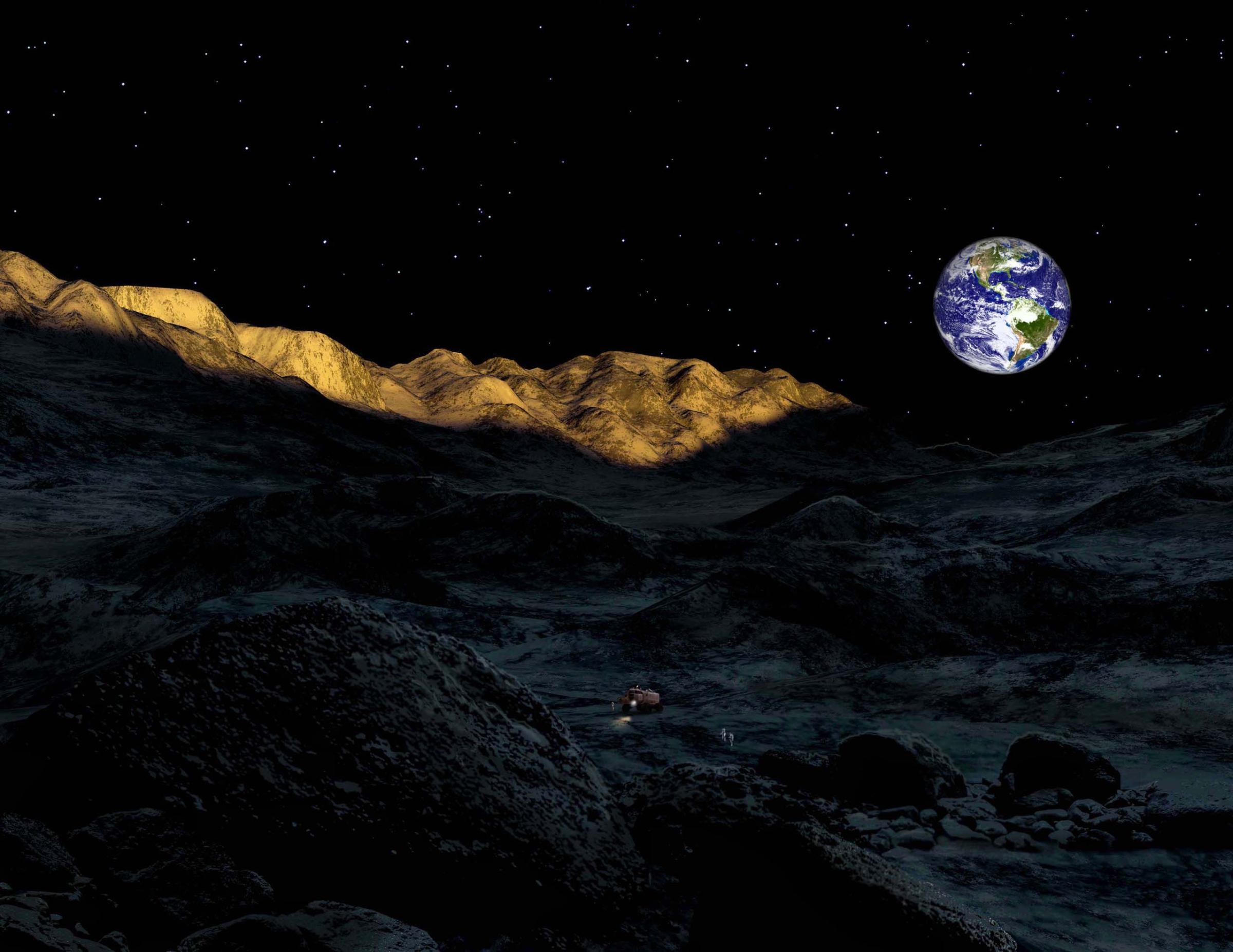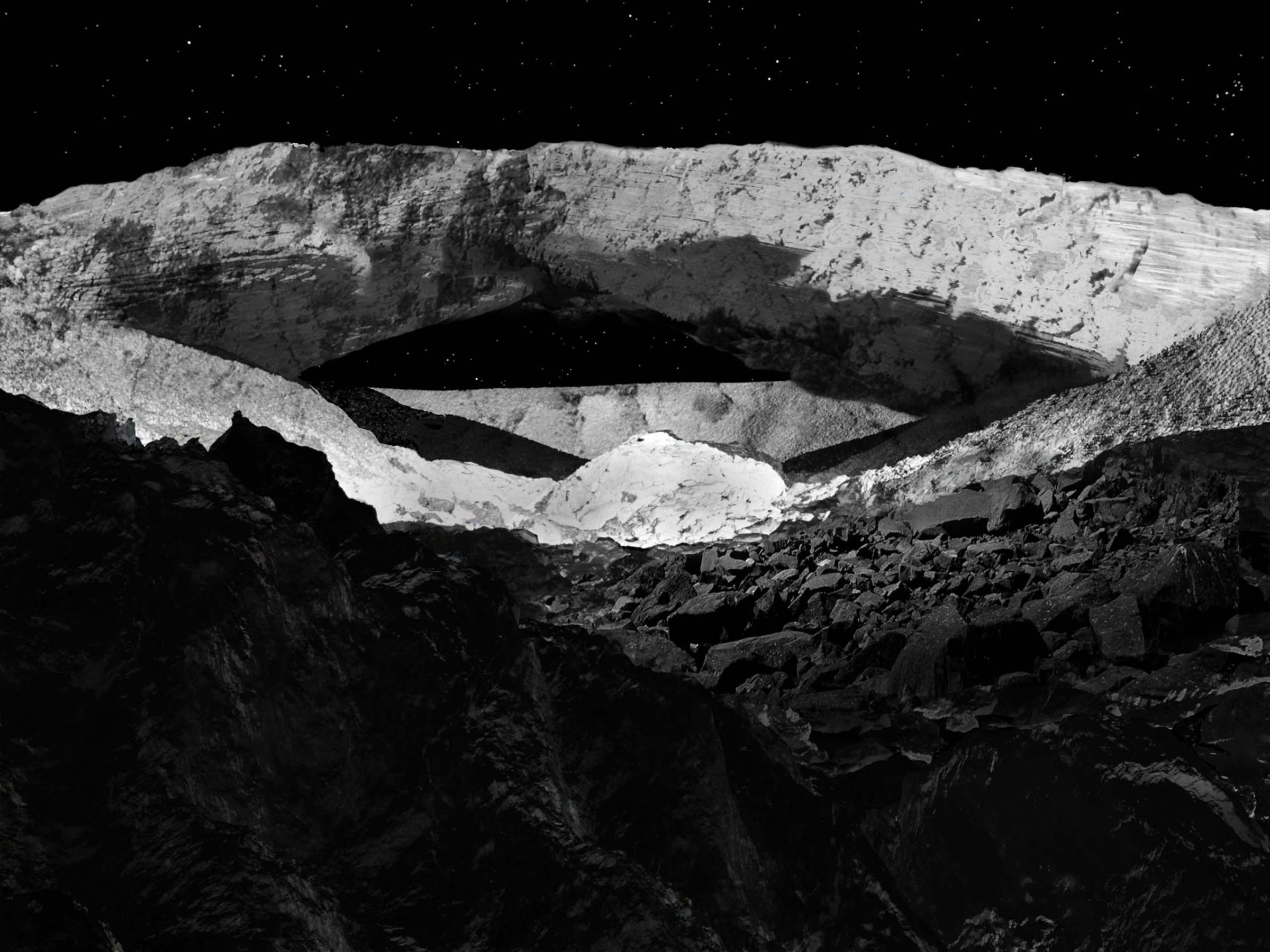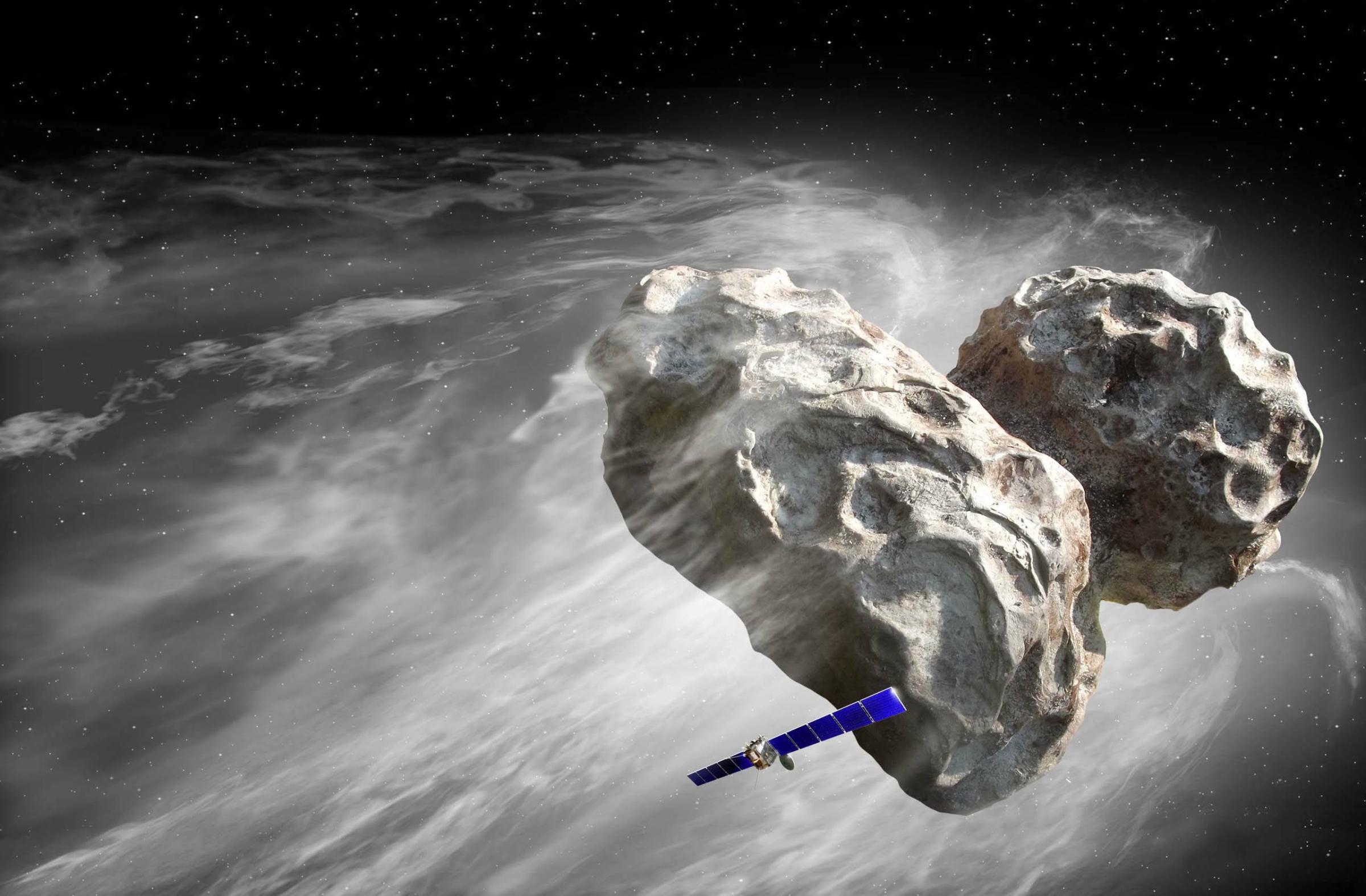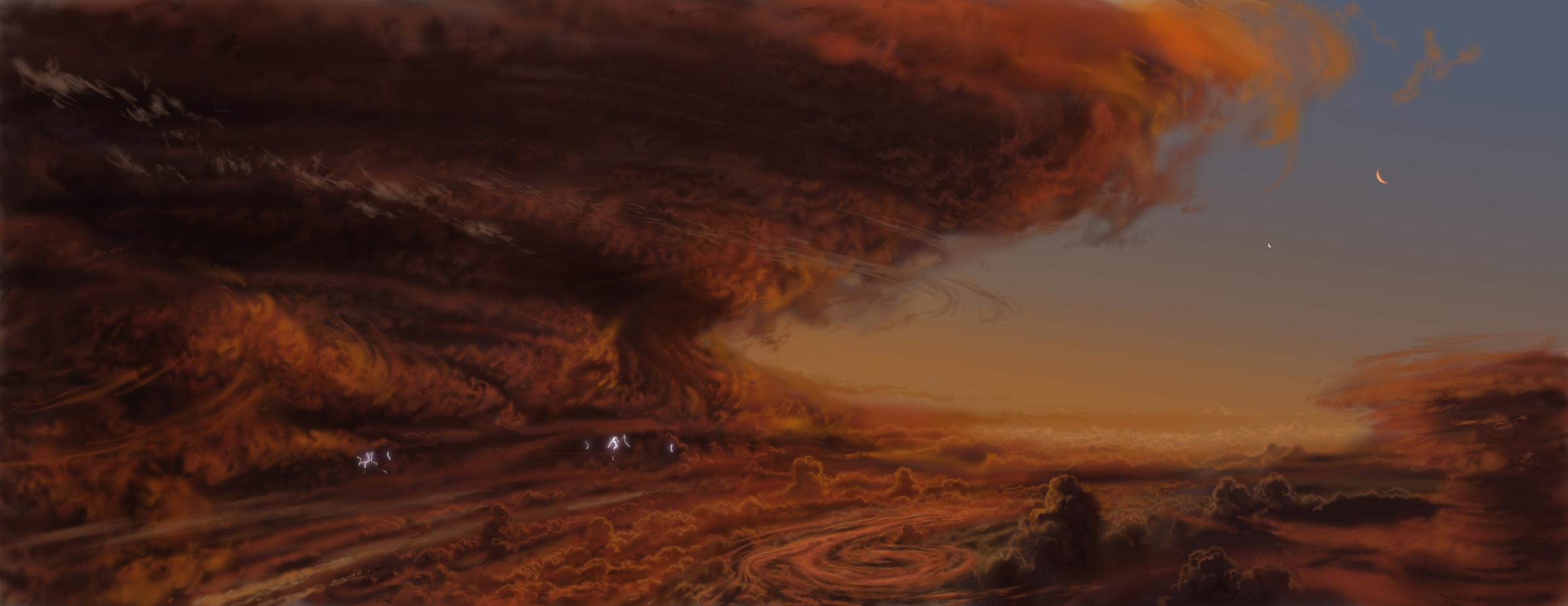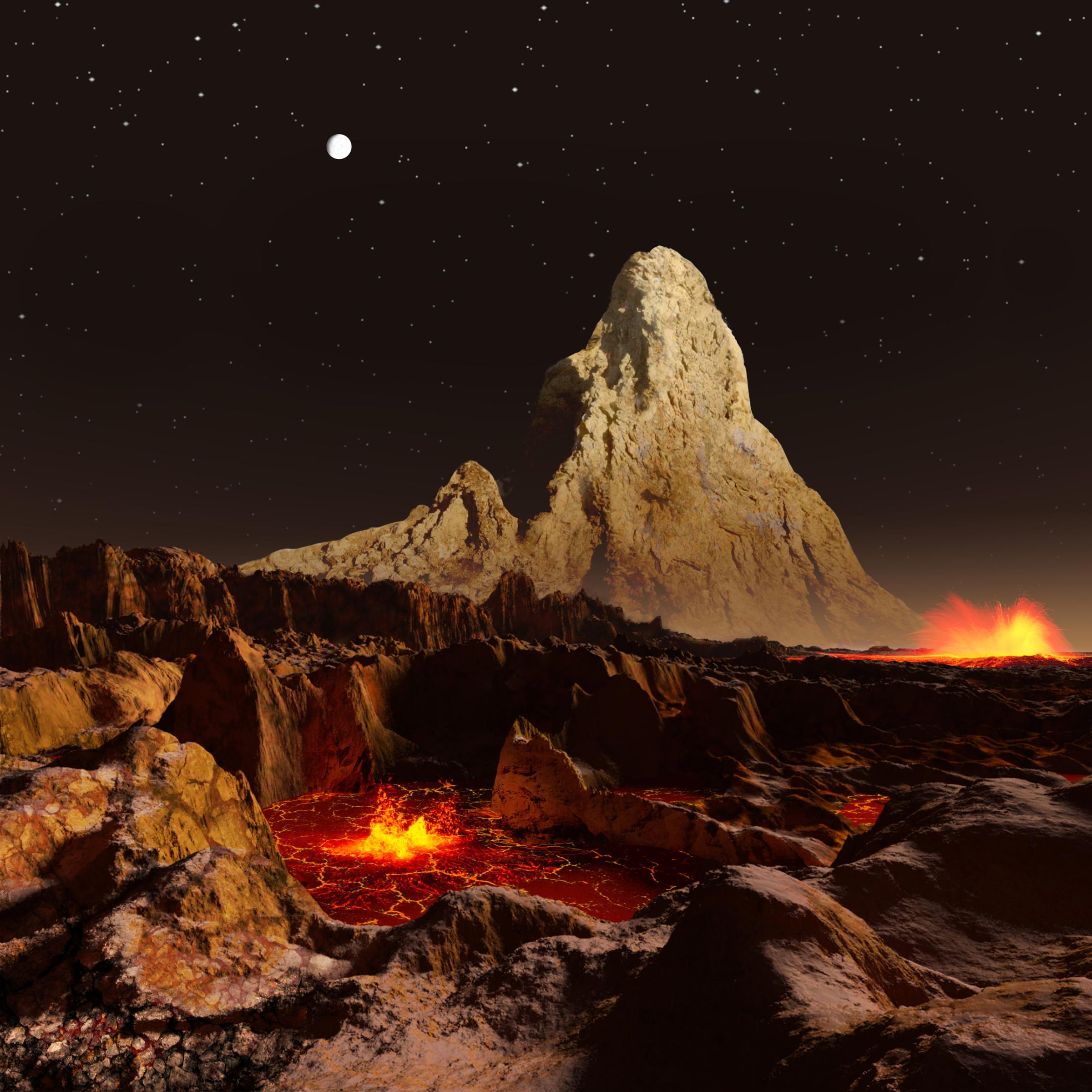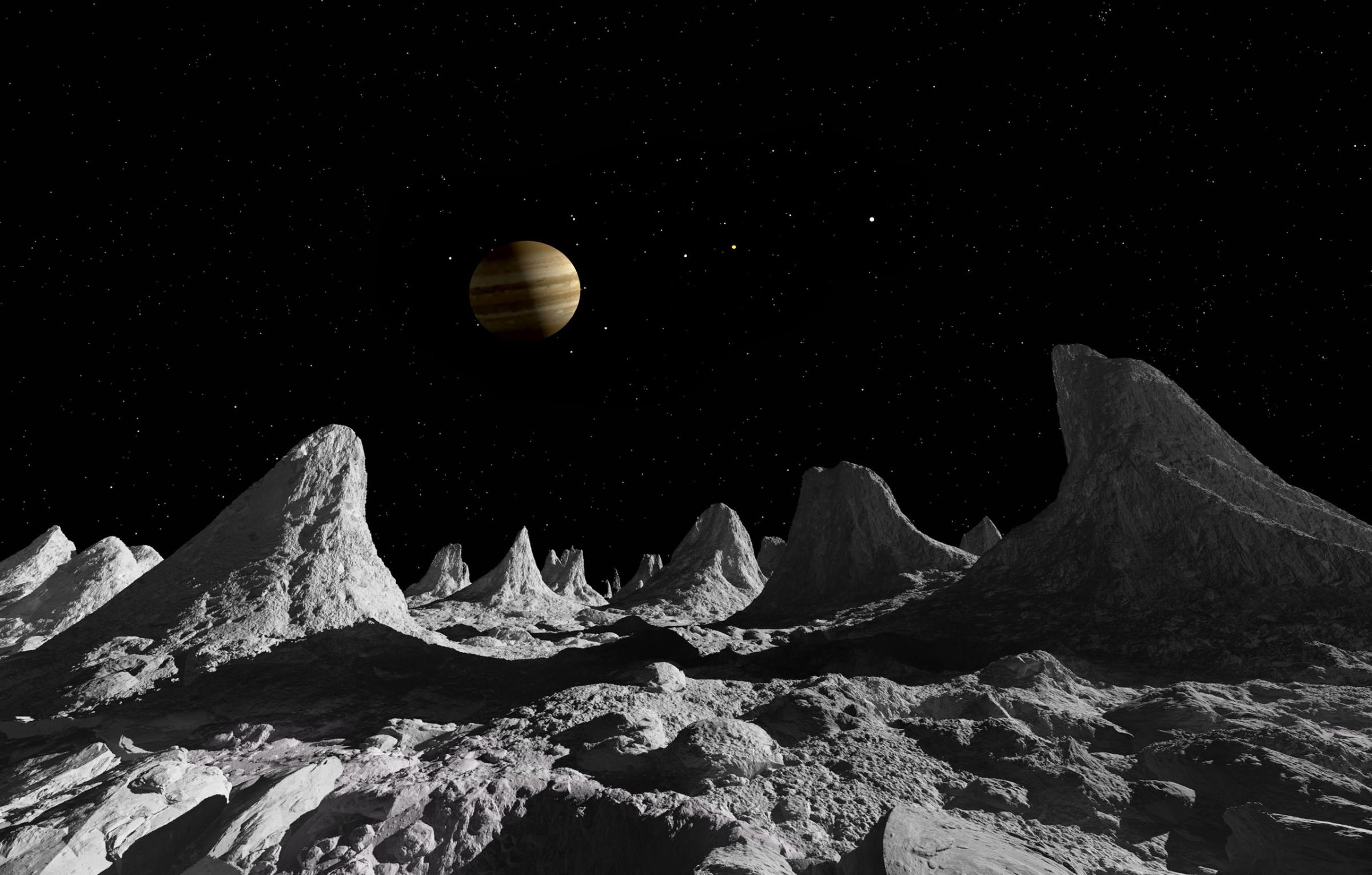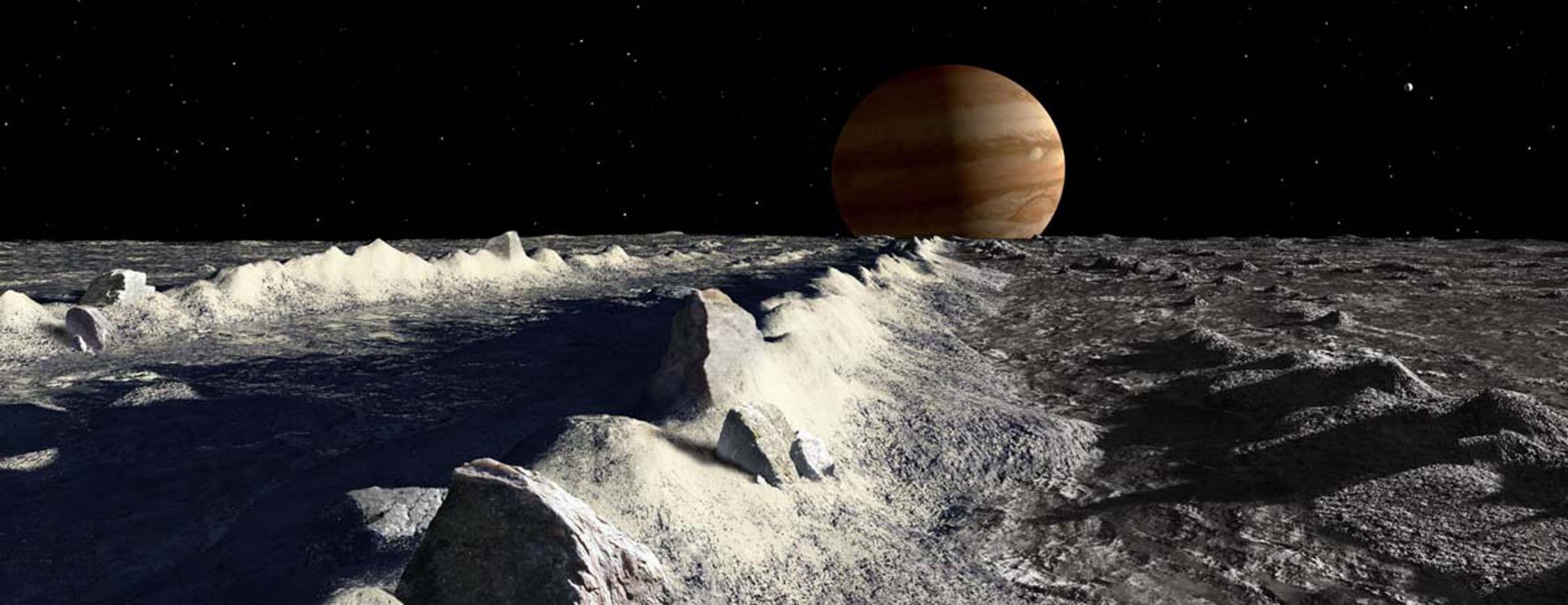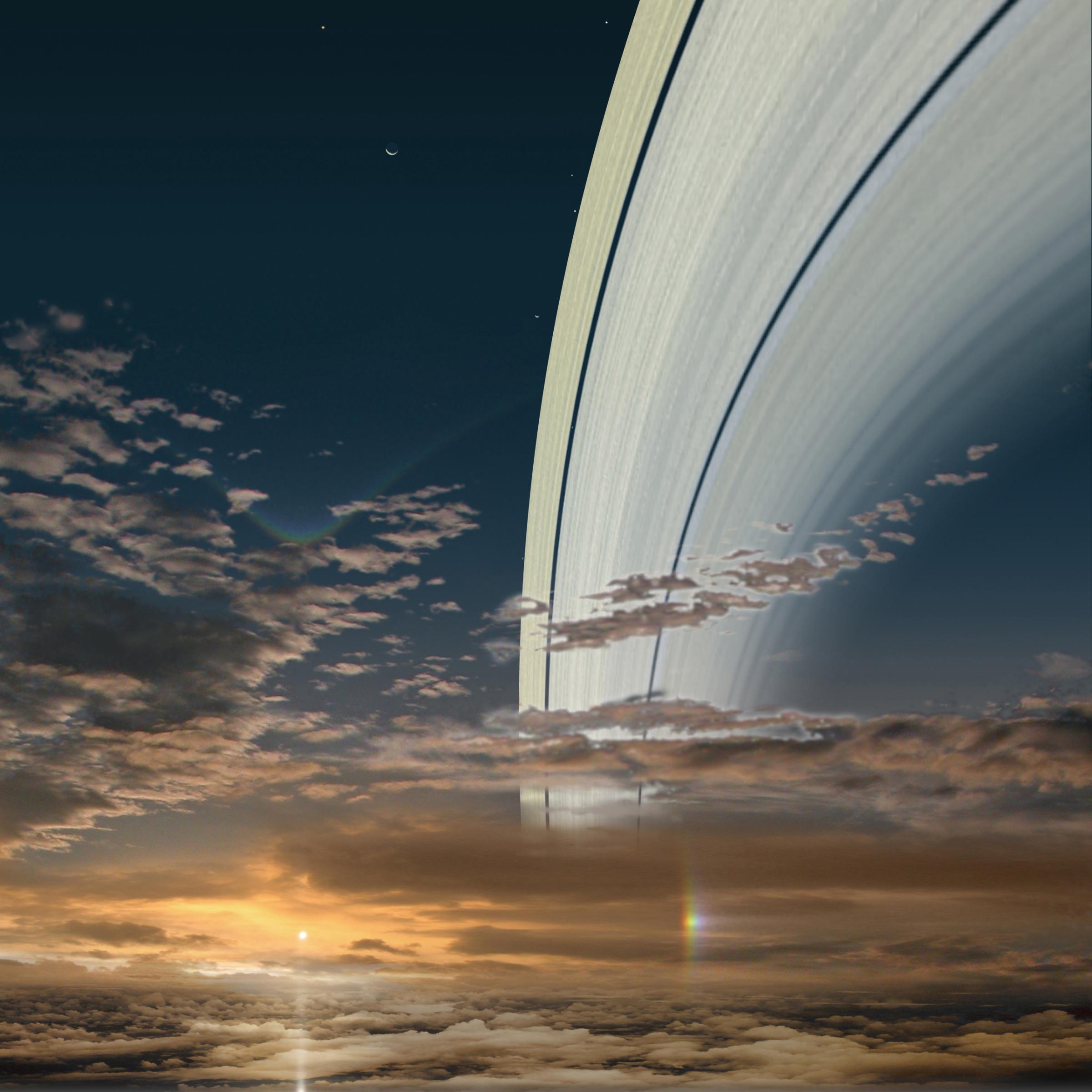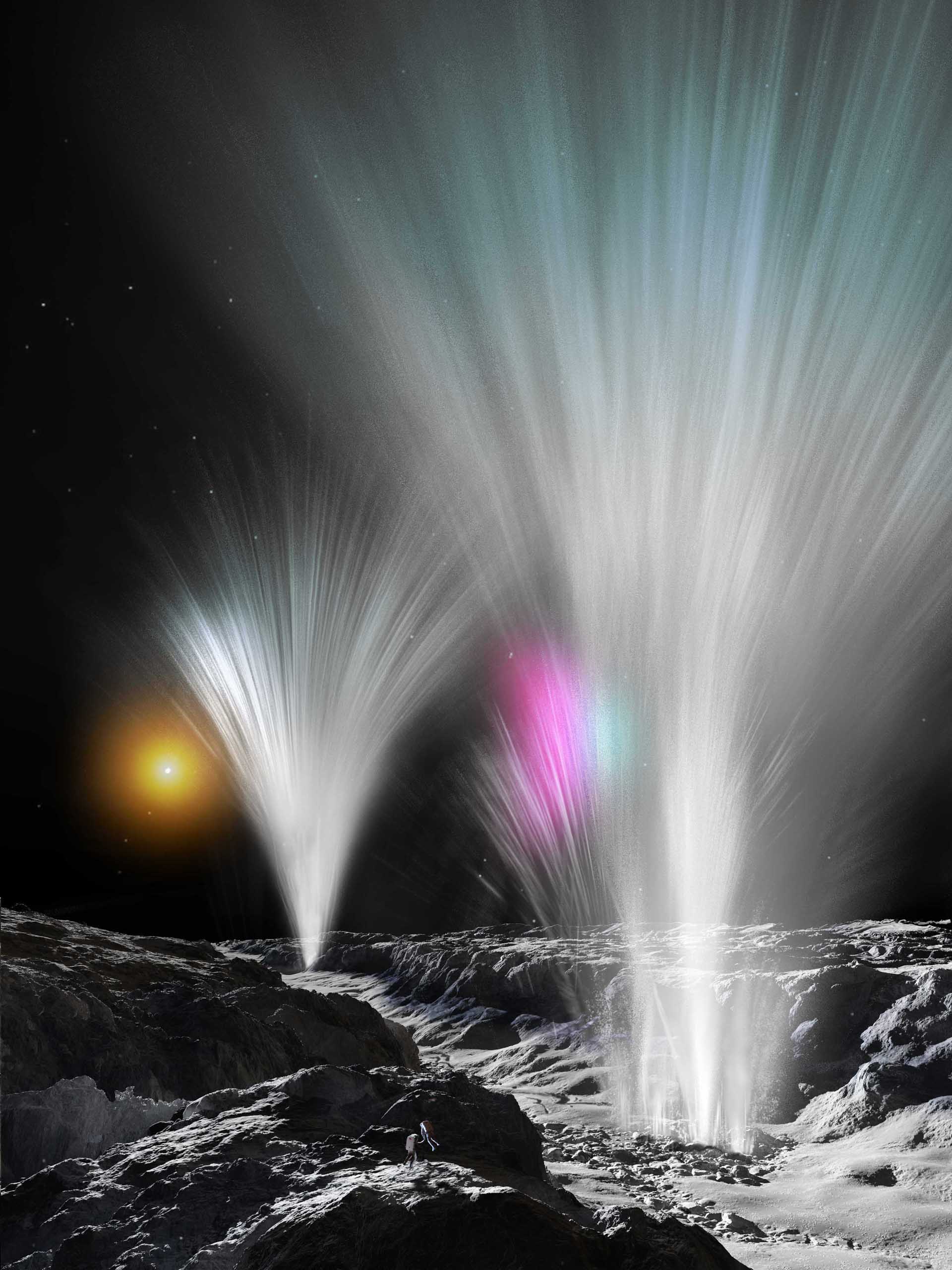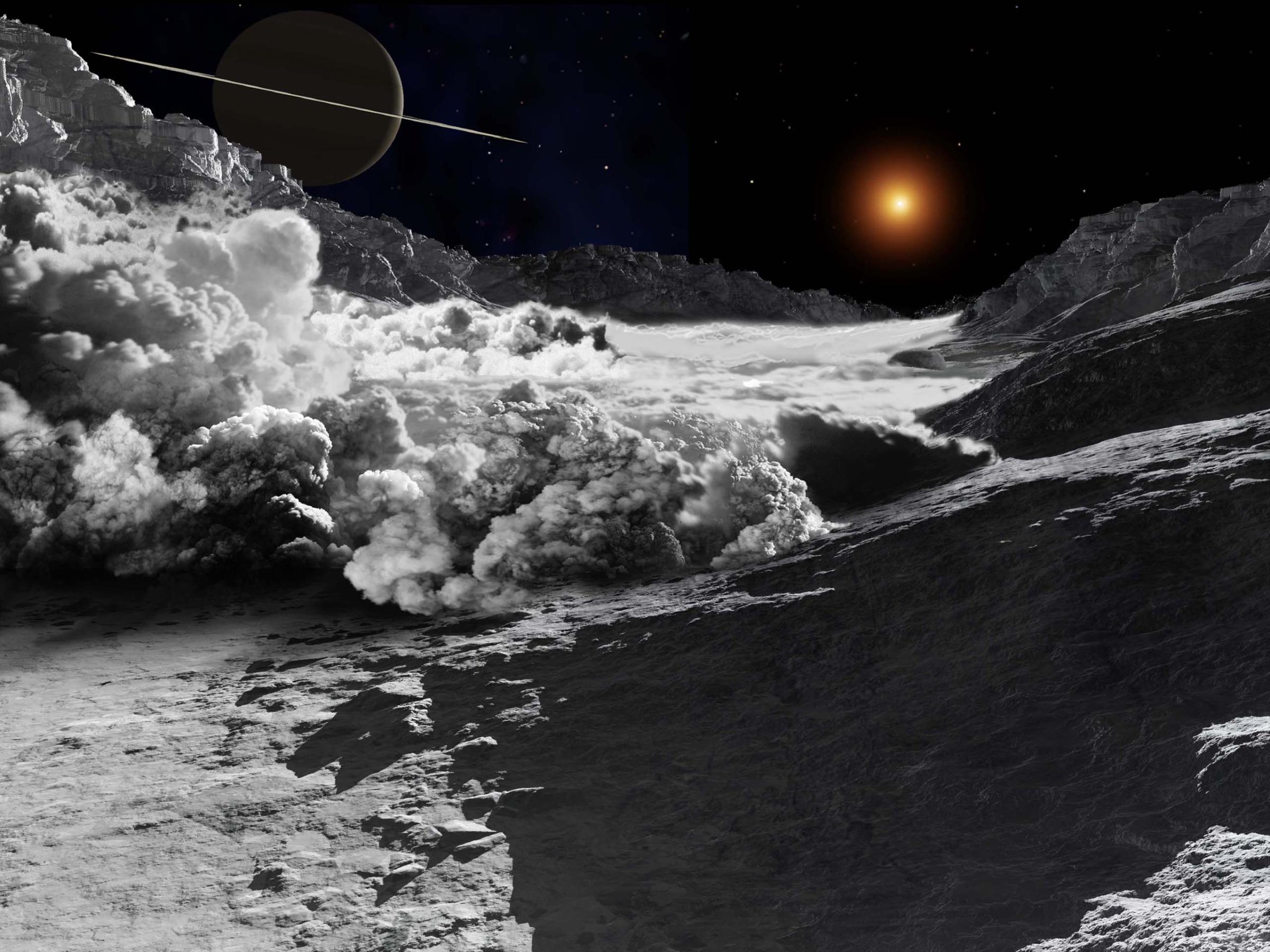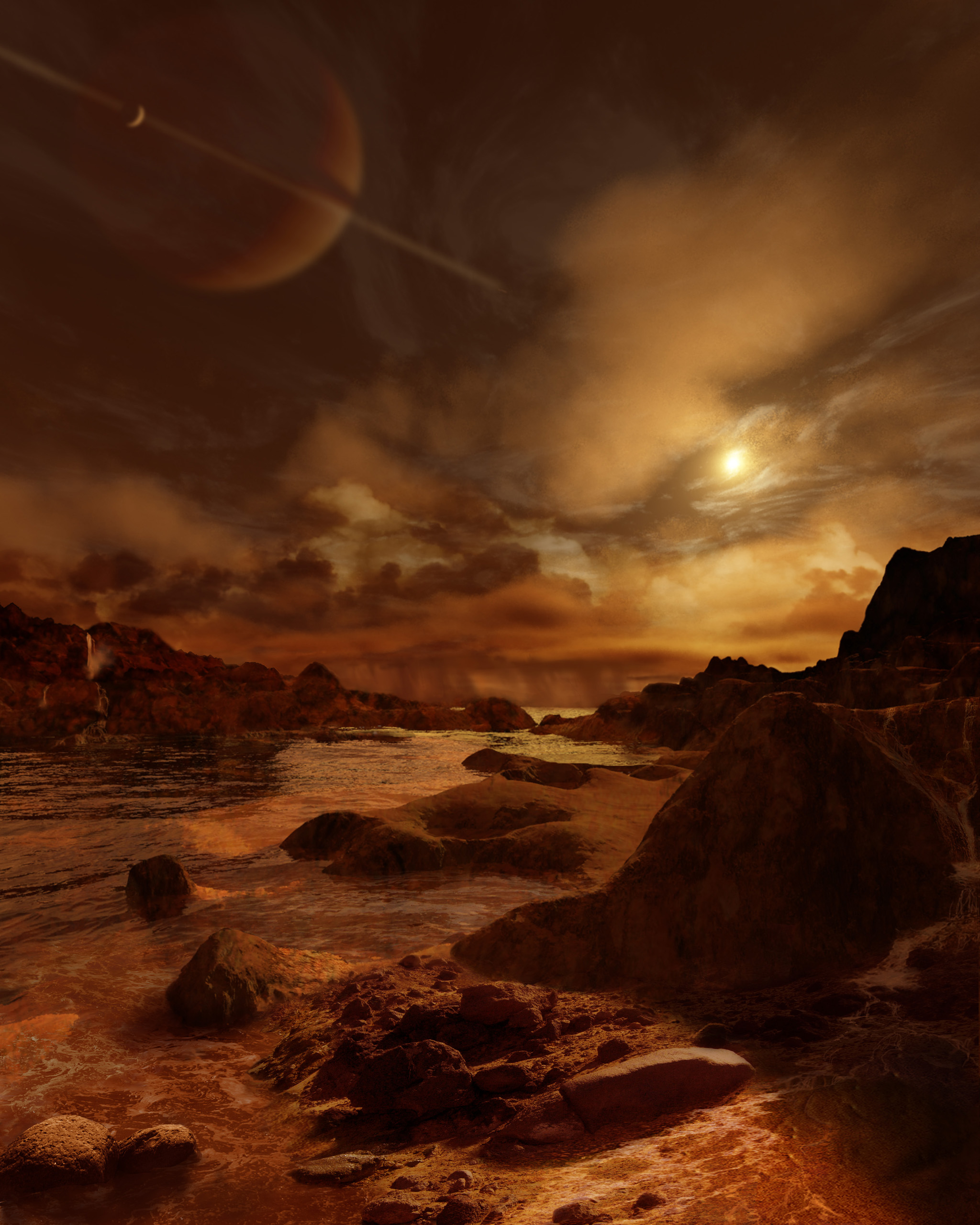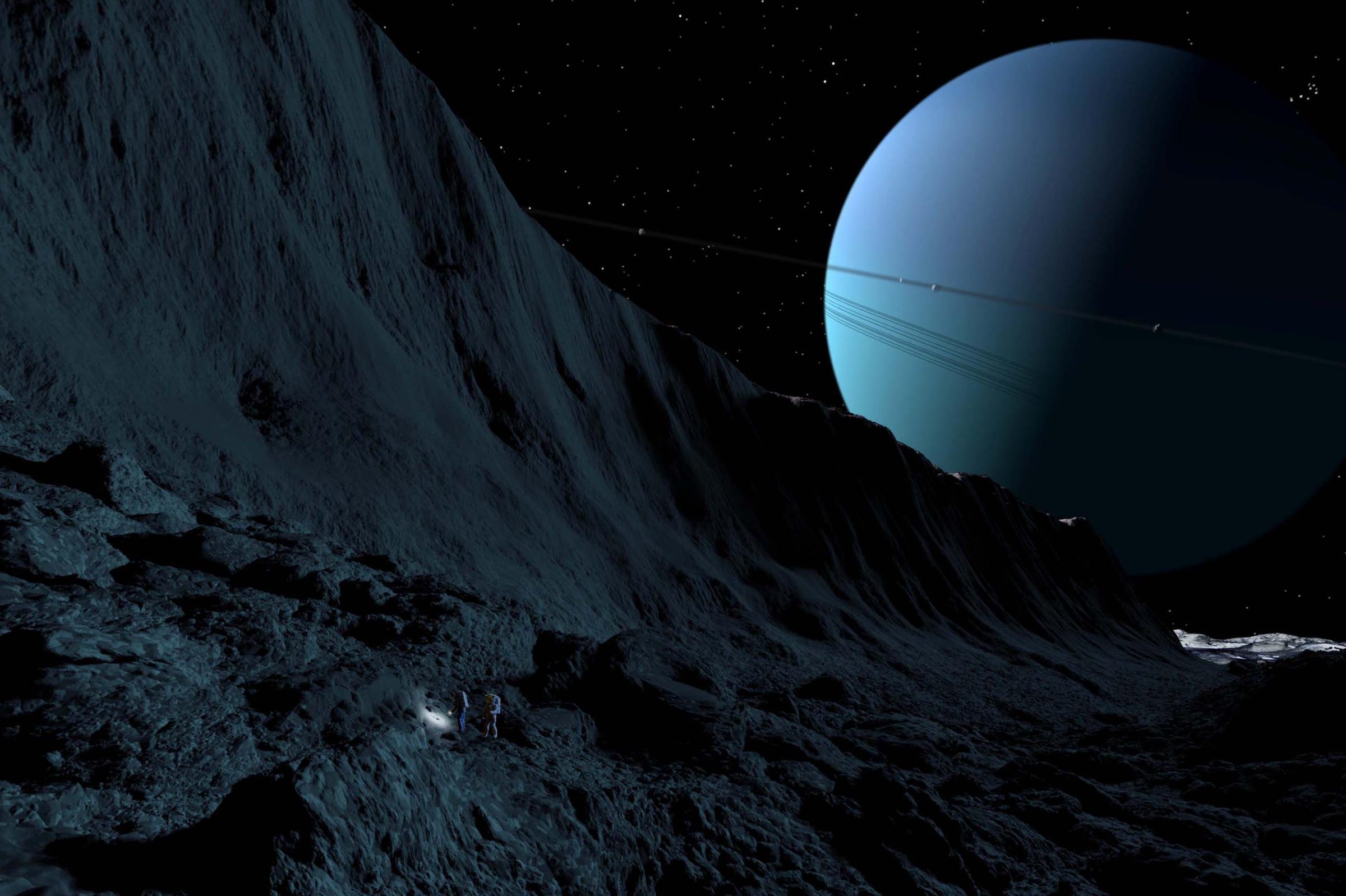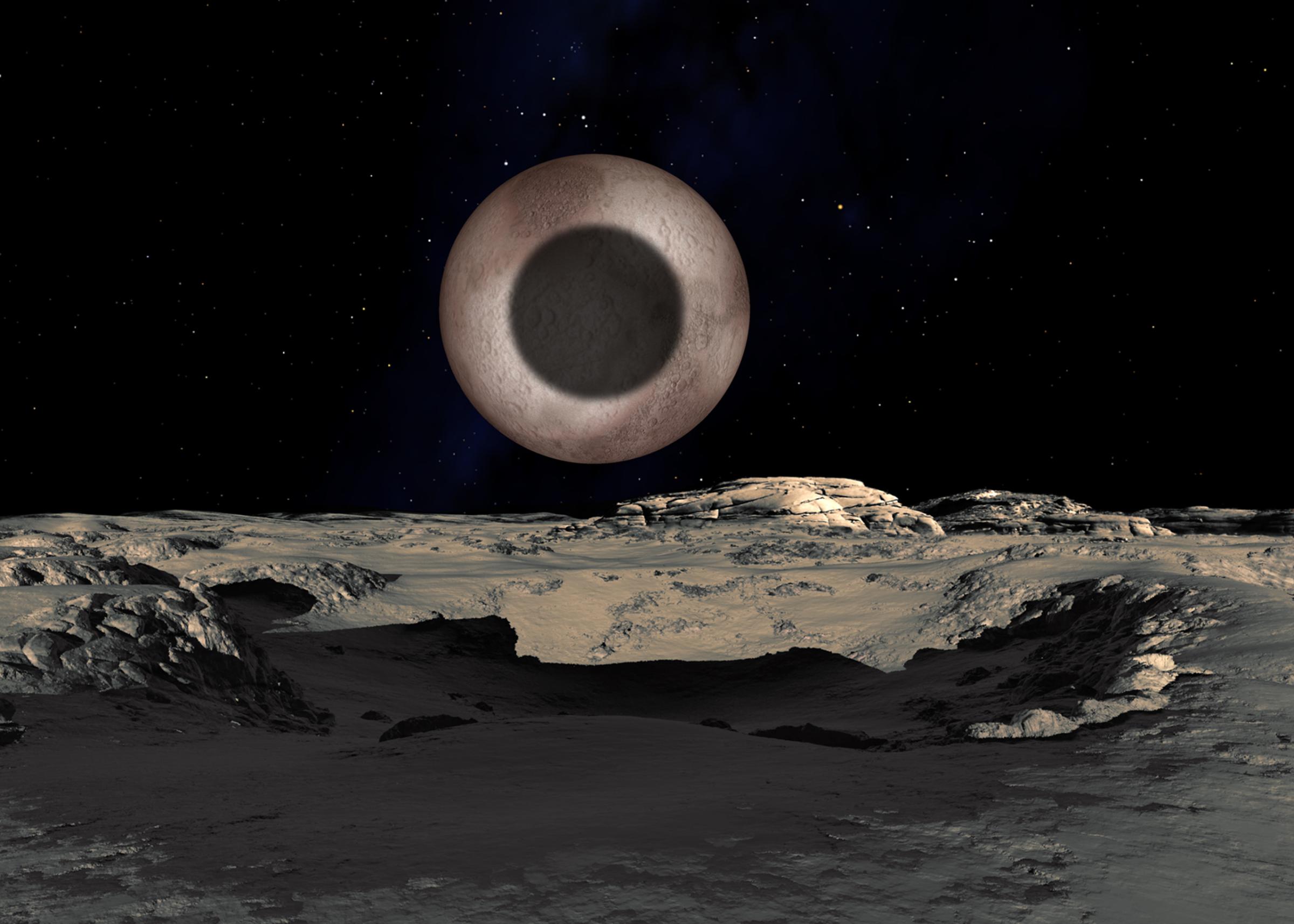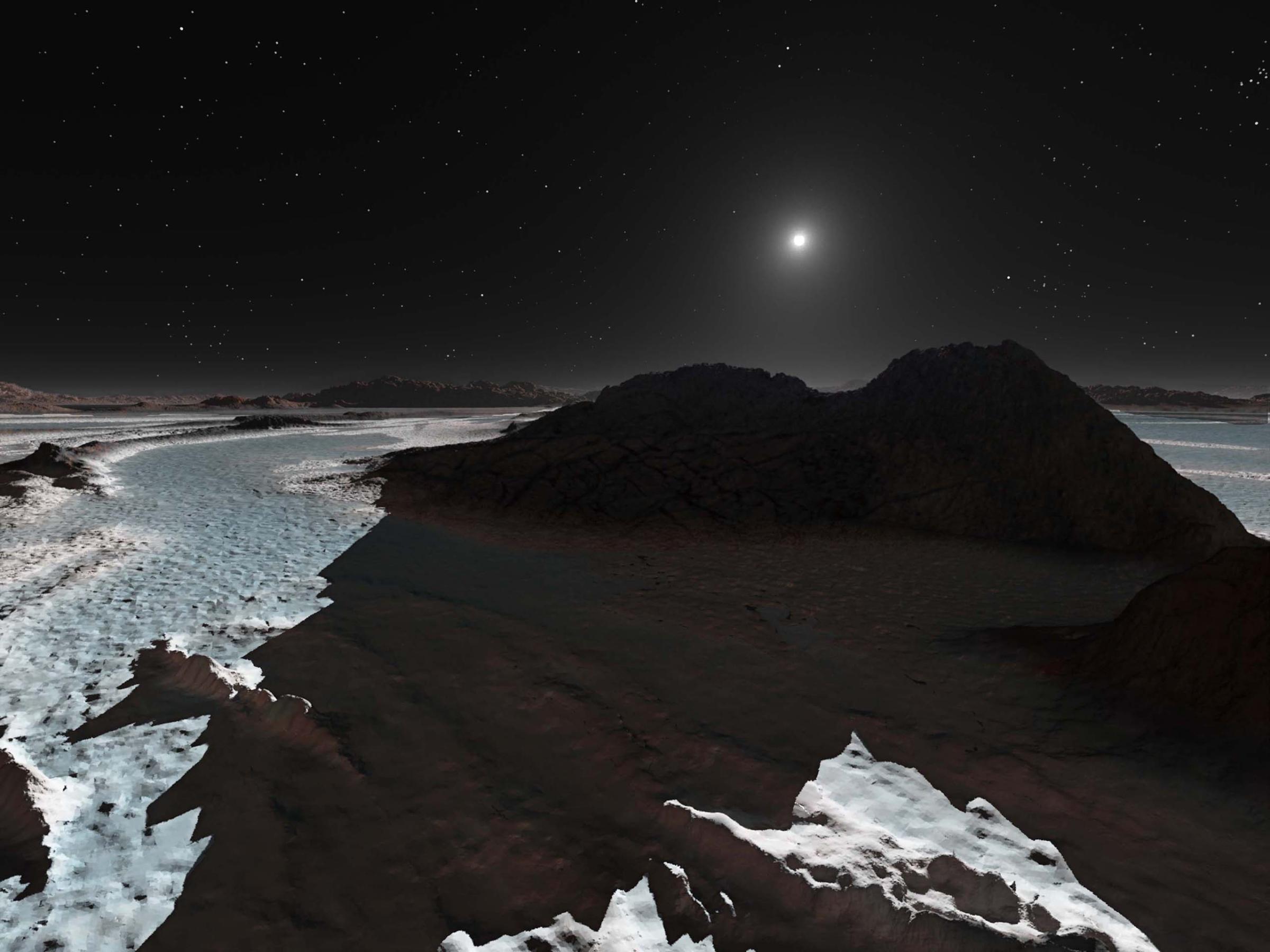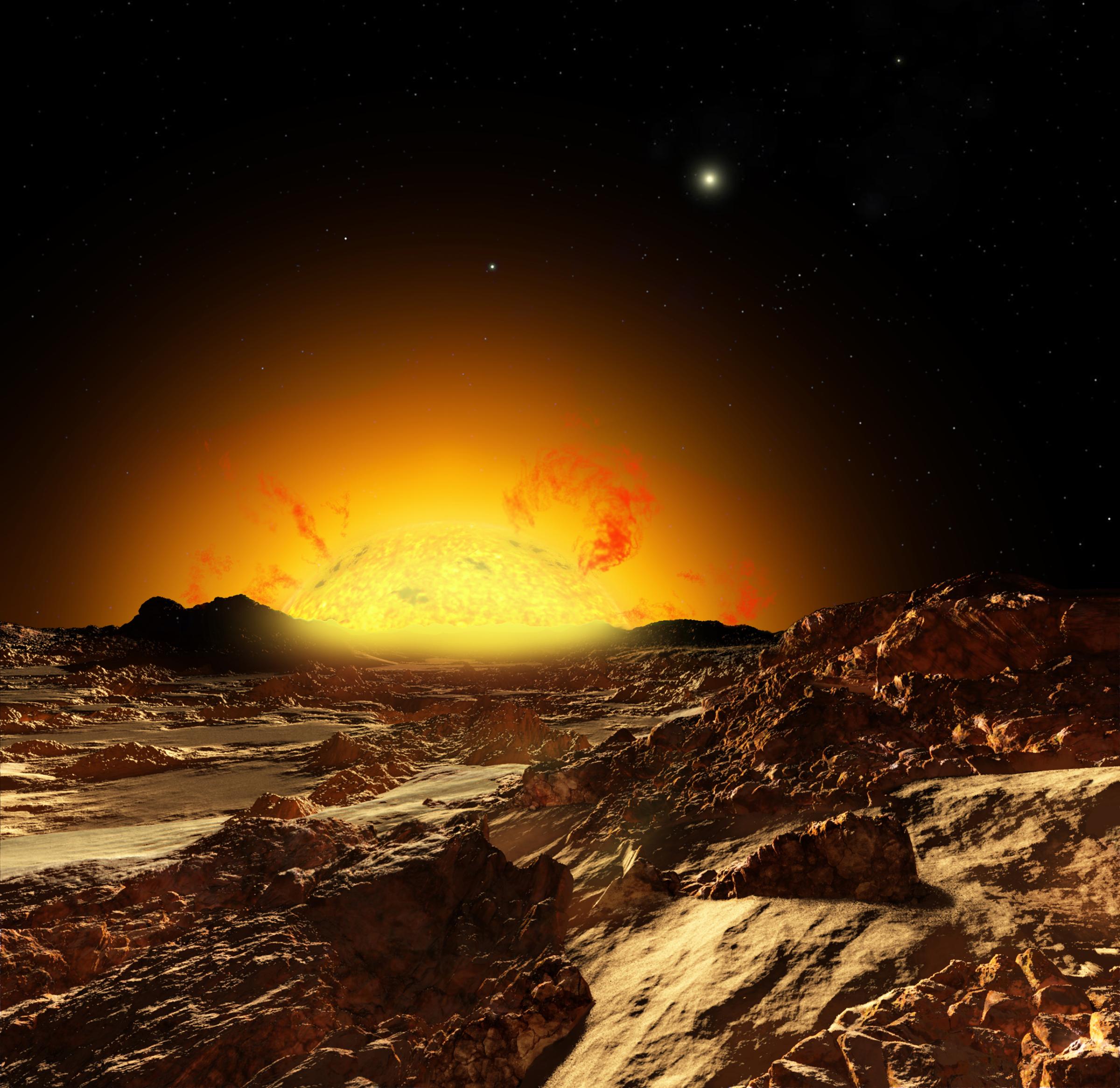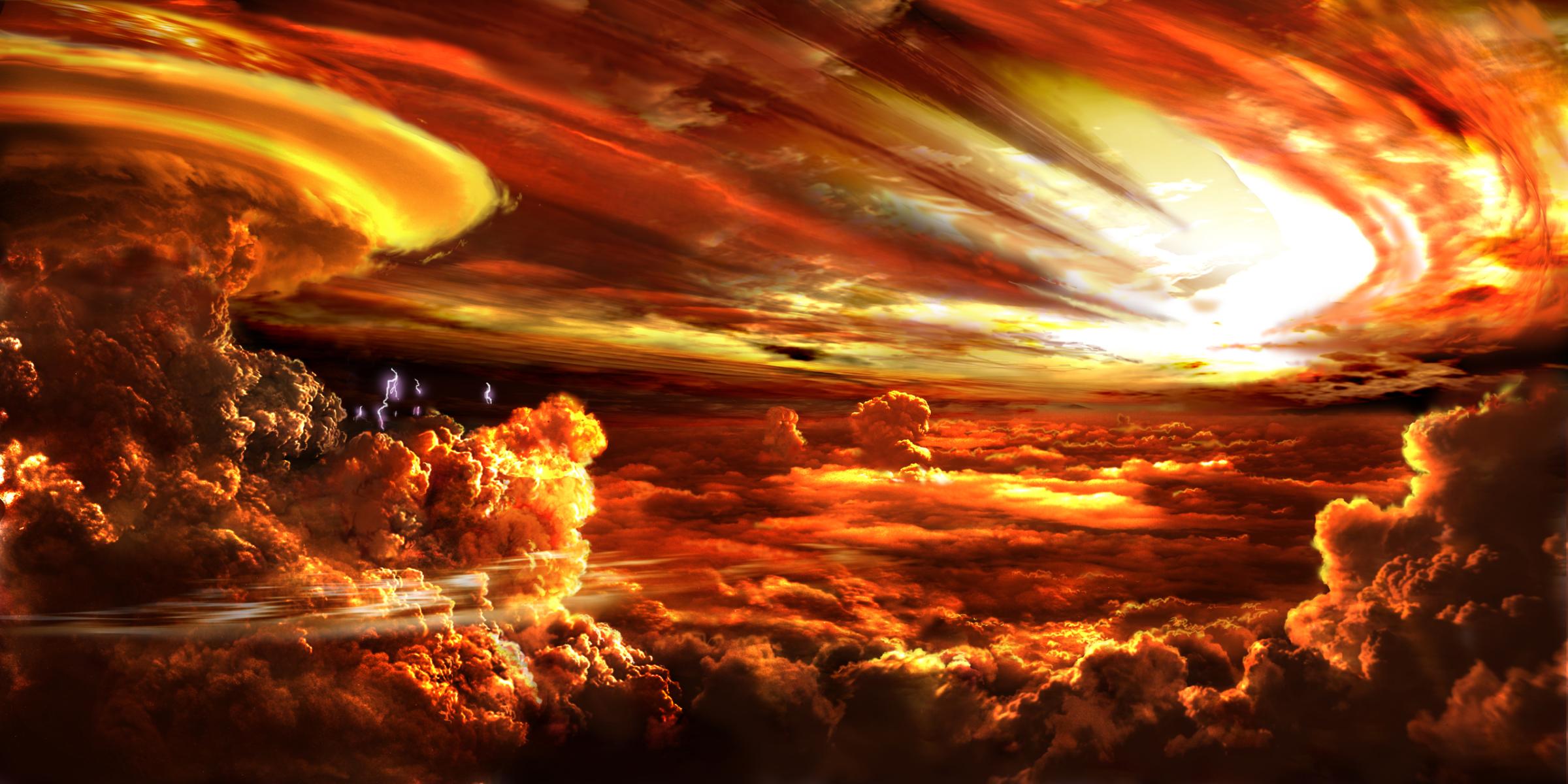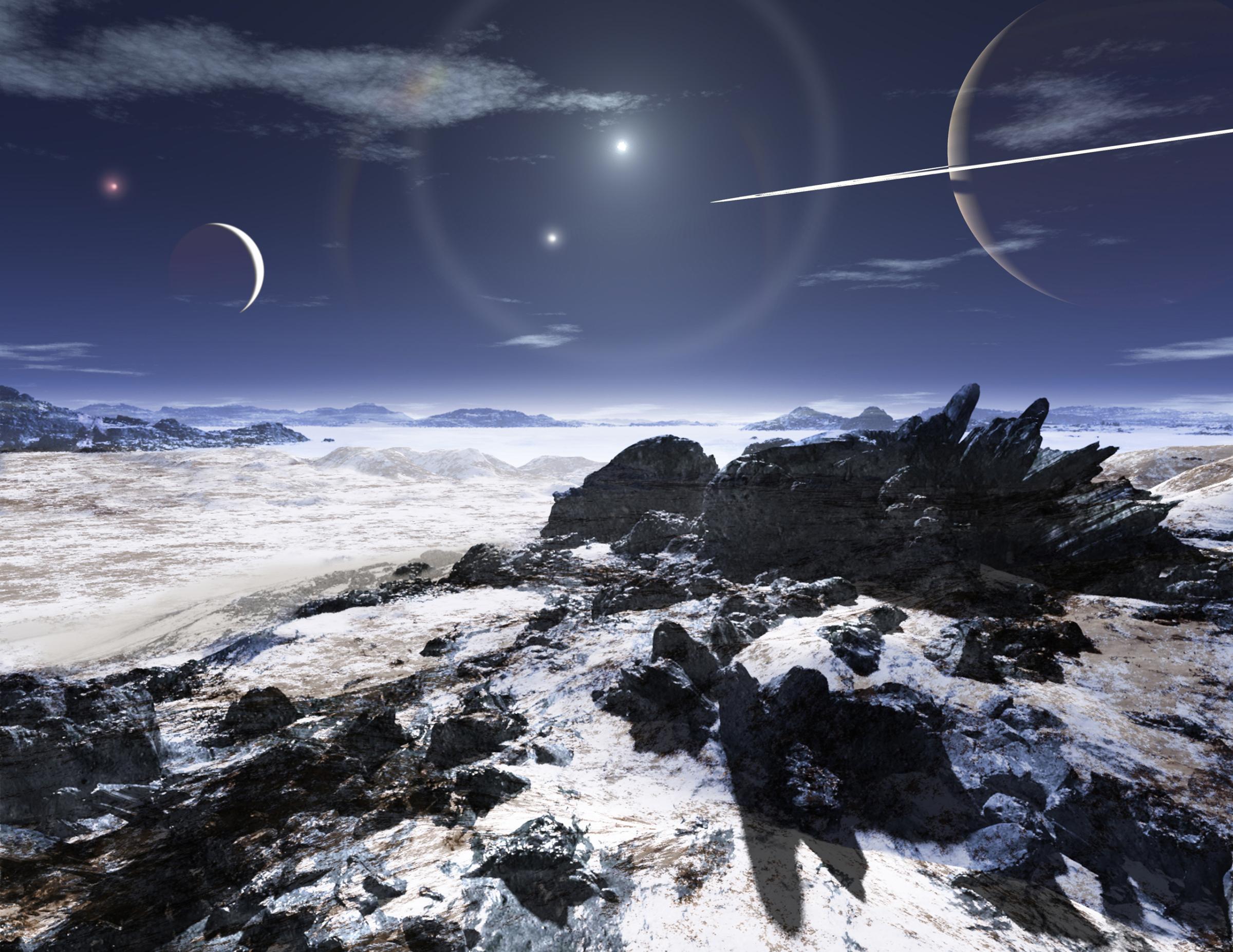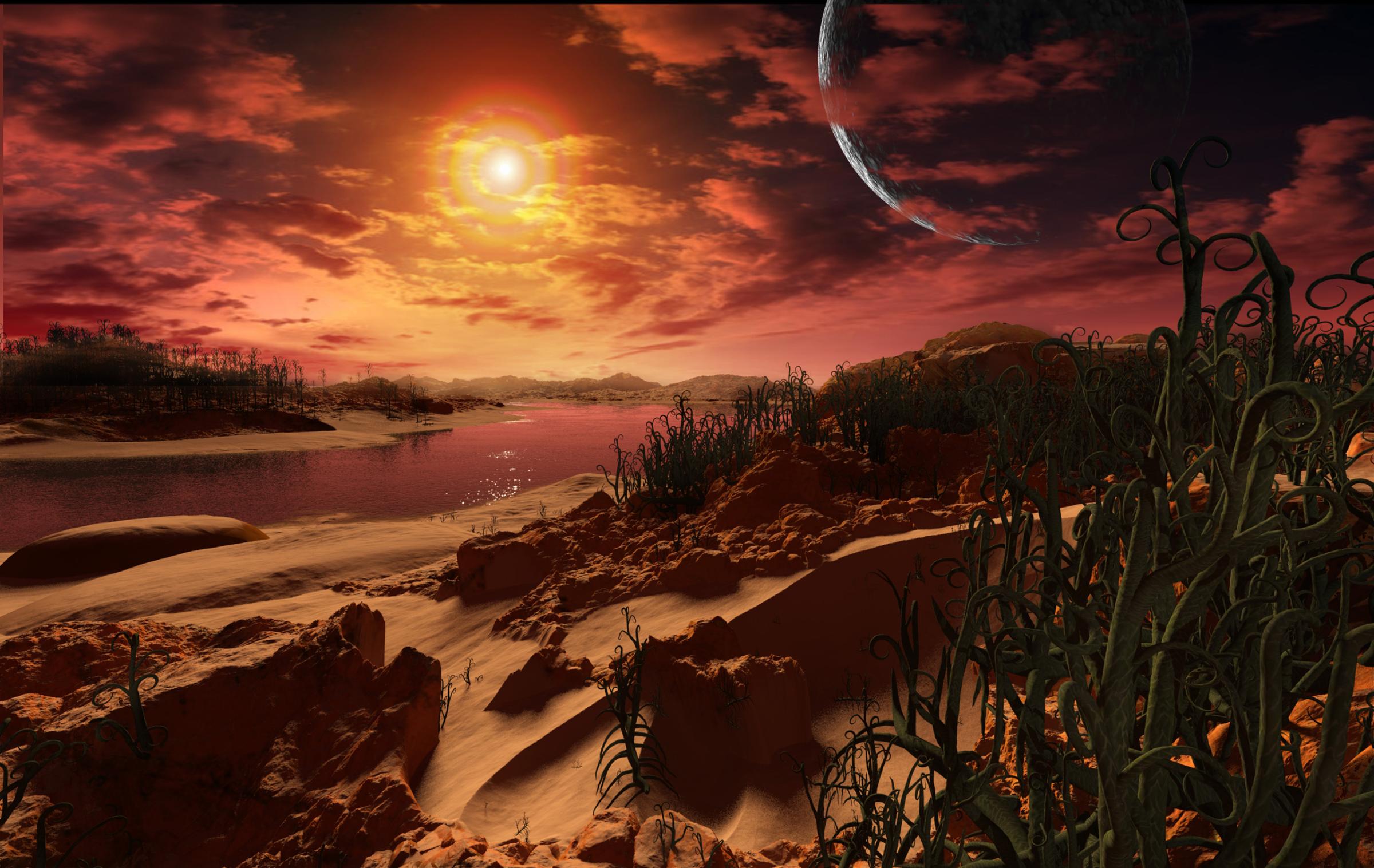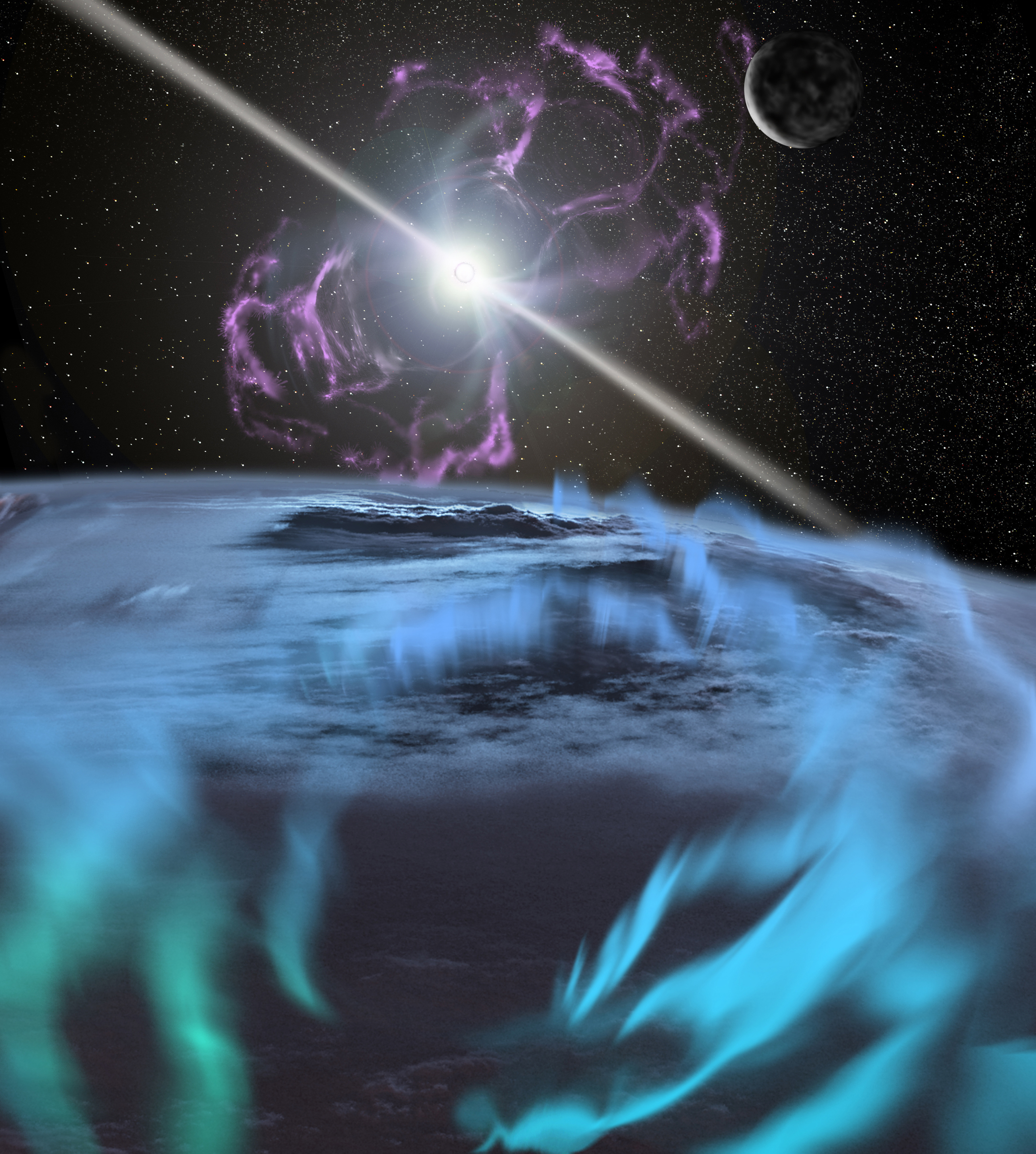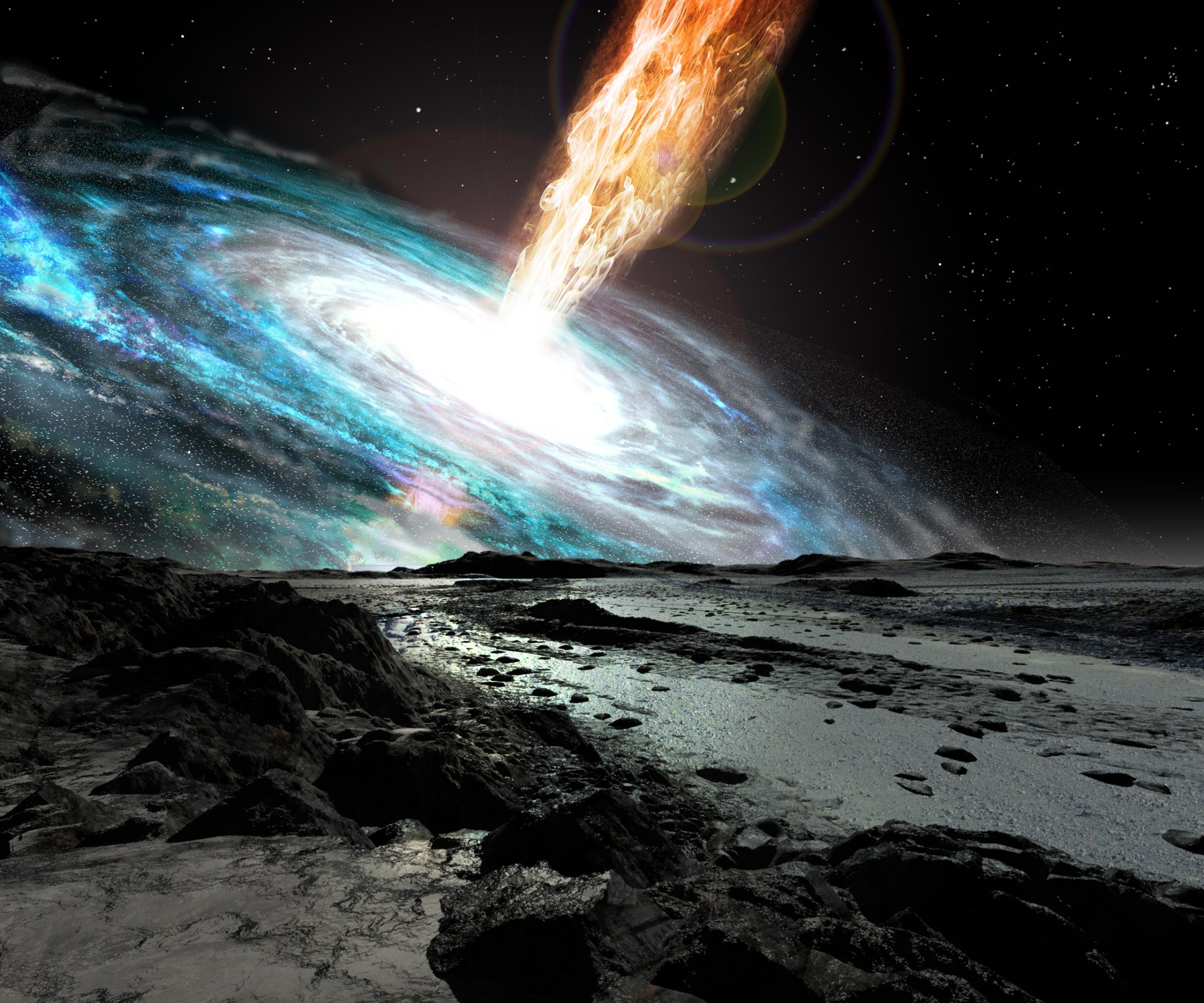November 12, 2014 4:41 PM EST
E ven as we humans employ increasingly sophisticated telescopes, probes, rovers and other technological marvels in order to learn more about our solar system and beyond, artists continue to engage their own (and one another’s) imaginations to envision what the outermost reaches of space might look like.
Here, in celebration of the 125th birthday of Edwin Hubble — a man who revolutionized not only our view of the universe, but our ideas about humanity’s place in the cosmos — one of the most prolific and celebrated of those “space artists,” Ron Miller , shares 33 of his own works with LIFE.
Hold onto your hats. It’s going to be a wild ride.
[NOTE: We recommend viewing this gallery in “Full Screen” mode.]
I have been fascinated by space travel and astronomy for literally as long as I can remember. I remember my father taking me outside one night to watch a little speck of light called Sputnik sail through the stars . . . and hurrying home from grade school every day so I wouldn’t miss an episode of “Space Patrol” or “Mr. Wizard.” I would have liked to have been a scientist, but a complete lack of talent in math made that impossible. So I did the next best thing: I combined my interest in space with my abilities as an artist. This, I knew, would be the only way in which I could travel to the moon, Mars and other planets. My ultimate goal is to make the other worlds we share the universe with as real to others as they are to me.
For decades I worked in traditional media, but deadlines eventually forced me to experiment with painting digitally. I now work this way exclusively, though a finished piece may often wind up being the result of a kind of hodgepodge of techniques that might include everything from pencil drawing and photography to sculpture.
Having this gallery of my art published by LIFE is especially meaningful to me. The legendary space artist, Chesley Bonestell , was one of the great influences on my life and career. Seventy years ago, in 1944, LIFE magazine featured Bonestell’s first published space paintings. (In the May 29, 1944 issue, to be exact.) It was the start of a career that would not only influence scores of artists and scientists, but also helped jump-start America’s fledgling space program. So this present gallery not only looks forward and outward to the wonders of the universe around us, but is a tip of the hat to the man who helped start our journey to the stars. — Ron Miller
Ron Miller is an illustrator specializing in science, astronomy, science fiction and fantasy and the author, co-author or editor of more than 50 books. He has designed postage stamps and worked on motion pictures as a production designer and special effects artist. His most recent book is The Art of Space: The History of Space Art, from the Earliest Visions to the Graphics of the Modern Era (Zenith Press, 2014). See more of his work at Black Cat Studios .
Sunrise on Mercury: The slow rotation and short year of Mercury combine to produce two sunrises and two sunsets every day. Mercury is three times closer to the sun than Earth is, and its light and heat are nine times more intense. © Ron Miller Venus: Crushing pressure, sulfuric acid rain, 700-degree temperatures. If you want to see Venus' towering Maxwell Mountains you better look fast — because it'd be a race to see whether you'd be crushed, incinerated or dissolved first. © Ron Miller The creation of our moon: 4.5 billion years ago, Theia, a planet the size of Mars, slammed into the primordial earth. The impact peels the earth like an orange. Titanic masses of material from both planets are thrown into space. The core of Theia eventually sinks to the center of our planet, where it remains to this day. The material flung away from the earth eventually came to form our present-day moon. © Ron Miller The Straight Wall on the moon: The Straight Wall is an enormous lunar cliff -- or, more accurately, a scarp. Its official name is Rupes Recta. The wall, which be seen easily in even a small telescope, is almost perfectly straight (so it has sometimes been called "the railroad") and nearly 75 miles long. © Ron Miller The Mountains of Eternal Light: There is a small crater named Peary that lies directly on the north pole of the moon. Since the sun never gets very far above the horizon, the bottom of the crater is in perpetual darkness. The only illumination might be eerie blue earthlight when our planet is above the horizon. Likewise, the sun never sets on some of the peaks of the crater rim. Even though the crater itself and much of the landscape around it may be in darkness, these peaks will always shine brilliantly. © Ron Miller Natural bridge on the moon: The bridge was created when a lava tube collapsed in two places, leaving in place a section more than 60 feet long and as wide as a two lane highway. © Ron Miller A typical landscape on Mars: barren rocks, sand dunes and dust devils whipping talcum-fine dust into the pink sky. © Ron Miller Mars' Valles Marineris is the greatest canyon yet found in the solar system. While Earth's Grand Canyon stretches across the northwestern corner of Arizona for 280 miles, Valles Marineris would stretch across the entire U.S. from the Atlantic to the Pacific. With a depth of between 3 and 4 miles, it is roughly four times deeper than the Grand Canyon. © Ron Miller Created about a month before Rosetta's rendezvous with Comet 67P/Churymov–Gerasimenko, this picture imagined what the historic encounter might look like. © Ron Miller Jupiter's Great Red Spot: Jupiter is a planet of storms. Vast cyclones rage through its atmosphere. The largest of these hurricanes is so enormous that it is visible from the earth. It was first seen in the seventeenth century, when it was named the Great Red Spot. Its swirling clouds cover an oval 7,500 miles long and 1,500 miles wide -- an area large enough to swallow two whole earths. © Ron Miller Exploring Io: Io, one of the four large moons of Jupiter known as the Galilean Satellites after their discoverer, Galileo Galilei, is the most volcanically active body in the solar system. Some of Io's volcanoes spew molten rock, like volcanoes on Earth, while others erupt molten sulfur compounds. It is the sulfur that gives Io its extraordinary colors since sulfur changes color depending on its temperature. © Ron Miller Tohil Mons, a towering, 18,000-foot peak that looms over the volcanic landscape of Io. © Ron Miller Exploring Europa, one of Jupiter's moons: Europa's icy, fractured surface may lay atop a vast ocean of warm, liquid water. It will probably be the primary goal in the future search for life in the solar system. © Ron Miller There is an area on Callisto, one of Jupiter's Galilean satellites, that is unlike anything on any of Jupiter's other moons. Several square miles of the surface is dominated by towering spires of ice, 260 to 330 feet tall. © Ron Miller The surface of Jupiter's moon, Ganymede, is wrinkled and fractured by the glacial movements of its thick, icy crust. As miles-thick slabs of ice collide, they create "pressure ridges" similar to those seen in Antarctic ice packs. © Ron Miller Saturn's rings are made of billions of chunks of nearly pure water ice, something like the ice cubes you can buy in a plastic bag at a convenience store. The rings' particles are very small, ranging in size from grains of sugar to several feet across. Each ring particle is, in effect, an individual moon and circles Saturn in its own orbit. It can be rightly said that Saturn is a planet with a billion moons. © Ron Miller Seen from a latitude equivalent to that of Washington, D.C., on earth, Saturn's rings dominate the sky above the planet like a vast, silvery rainbow. © Ron Miller Cassini images of Saturn's moon Enceladus revealed fountain-like sprays of fine, icy material that tower over the south polar region. The jets are geysers erupting from pressurized subsurface reservoirs of liquid water, roaring from the fractured surface at the speed of a jet engine's exhaust. © Ron Miller Titanic avalanches of ice occasionally roar across the surface of Saturn's tiny moon, Iapetus. © Ron Miller Saturn's giant moon, Titan, features lakes of liquid methane, along with cryogeysers and cryovolcanoes. Its frigid atmosphere is denser than that of the earth. © Ron Miller The Great Wall (officially known as "Verona Rupes") of Miranda, one of the moons of Uranus, is a fabulous, sheer-walled cliff 15,000 feet high. The great height of the cliff combined with the low gravity on Miranda would mean that a clumsy astronaut falling from the edge would take more than five minutes to reach the bottom. © Ron Miller In July 2015, the New Horizons spacecraft will fly by Pluto and its moon, Charon, providing the first-ever close-up images of these mysterious bodies. © Ron Miller Pluto's surface is so cold that oxygen is frozen hard as steel. On a clear day the sun provides about as much heat and light as a full moon does back on earth. With Pluto's surface temperature at -378 to -396 F, you'd freeze solid in a nanosecond. © Ron Miller The shadow of Charon on Pluto: Charon is nearly a third the size of Pluto -- a fact emphasized by the enormous shadow it casts on the planet when eclipsing the sun. © Ron Miller Some astronomers have suggested that rivers of liquid nitrogen and neon might flow across the frigid surface of Pluto. © Ron Miller The nearest star to our solar system is Alpha Centauri -- in reality, a triple star system consisting of Alpha Centauri A, B and Proxima Centauri. Alpha Centauri B, a sunlike star, possesses at least one planet, seen here. © Ron Miller Seen here from a hypothetical moon, this gas giant planet orbits within a triple star system. © Ron Miller This red star has been gradually increasing in size and brightness. This picture shows a distant hypothetical planet, frozen for billions of years but now thawing under the growing heat of its sun. © Ron Miller Upsilon Andromeda b, an extra-solar planet in the constellation of Andromeda: One side of this gas giant planet perpetually faces its star. This causes its atmosphere to become overheated, flowing rapidly toward the cool far side. The result is vast, violent storms that sweep across the planet. © Ron Miller 16 Cygni B b, an extrasolar planet in the constellation of Cygnus: Winter has come to this Saturn-like world and its collection of moons. Traveling in a wildly elliptical orbit, the planet broils during its summers and freezes during the long winters of its 800-day-long year. 16 Cygni Bb is one of the rare worlds to orbit within a triple star system. © Ron Miller Kepler 186f b, an exoplanet about 500 light-years from Earth: Orbiting a small, red star, this earth-like world may be a likely candidate for life since it may be warm enough to permit liquid water to exist on its surface. © Ron Miller PSR B1257+12 B, an extrasolar planet in the constellation of Virgo: This super-earth orbiting a pulsar was one of the first exoplanets to be discovered. Intensely cold and bathed by the intense radiation emitted by the pulsar, it would be a world hostile to life. © Ron Miller A rare species of galaxies is known to emit enormously powerful jets of matter and energy -- driven by titanic black holes in their centers. © Ron Miller More Must-Reads From TIME The 100 Most Influential People of 2024 Coco Gauff Is Playing for Herself Now Scenes From Pro-Palestinian Encampments Across U.S. Universities 6 Compliments That Land Every Time If You're Dating Right Now , You're Brave: Column The AI That Could Heal a Divided Internet Fallout Is a Brilliant Model for the Future of Video Game Adaptations Want Weekly Recs on What to Watch, Read, and More? Sign Up for Worth Your Time 